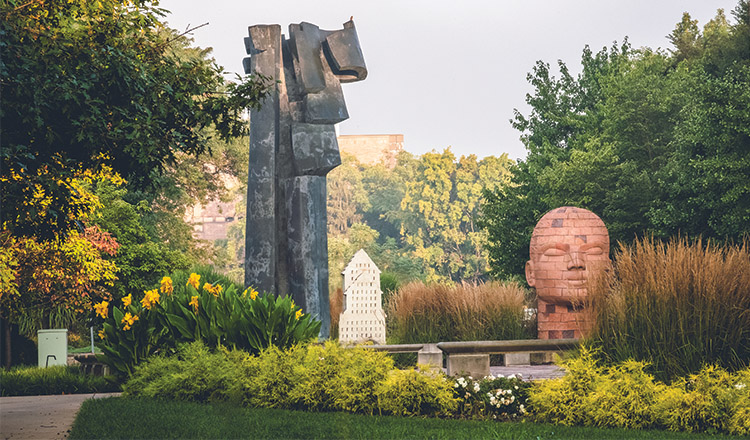Quite literally transforming campus, the 40-foot bronze Transformation sculpture was installed on the south portion of campus in 2002 to serve as more than an art form.
Transformation was given to the University as a gift from the class of 1952. The class raised over $860,000 for a scholarship fund and the commissioned piece that former president Steven Beering (HDR S’00) suggested. Beering discovered the Spanish sculptor Faustino Aizkorbe while vacationing in Europe and knew his work would accentuate the existing campus architecture.
Transformation was installed on the Agriculture Mall near Marsteller Street in order to create a visual pathway from the mall to the Bell Tower. A physical pathway also emerged, as the construction of a sidewalk was necessary due to the sculpture’s location. This addition, as well as landscape alterations, contributed to the heightened aesthetics and pedestrian-friendly improvements to the area.
Before creating and installing the sculpture, Aizkorbe visited Purdue twice to meet with students, faculty, and the class of 1952. He returned a third time to help oversee the installation process. Aizkorbe said campus architecture inspired him while creating Transformation. He was reminded of the Romanesque pillars that support the world’s great buildings, and he wanted to incorporate Purdue’s engineering legacy while acknowledging its continuously changing nature through the sculpture’s unfurling pattern, which appears symmetrical when viewed from above.
On April 20, 2002, former president Martin Jischke (HDR E’07) dedicated Transformation during the Discover Purdue campaign, which was named in honor of the creation of Discovery Park and meant to highlight the University’s accomplishments and aspirations. “Transformation beautifies the campus, allowing the arts to complement and enhance our academic life,” he said.
Aizkorbe made a series of paintings when he was planning Transformation to help him visualize the undertaking. He donated these paintings to Purdue, and they’re currently displayed in the Lyles School of Civil Engineering main office.
Aizkorbe also created a smaller iron and bronze sculpture in honor of Beering. Located near the east entrance of Beering Hall, the untitled sculpture features four iron railroad tracks that represent Purdue’s ties to transportation, advanced communication, and the spirit of progress. The bronze torso represents Beering. The Maltese cross, which is cut from the torso, symbolizes that Beering was at the heart of transferring the spirit of progress to students.
The cut-out cross lies beneath the tracks to represent the foundation Beering provided to the University during his administration.
What are your favorite hidden gems on campus? Let us know in the comments.

